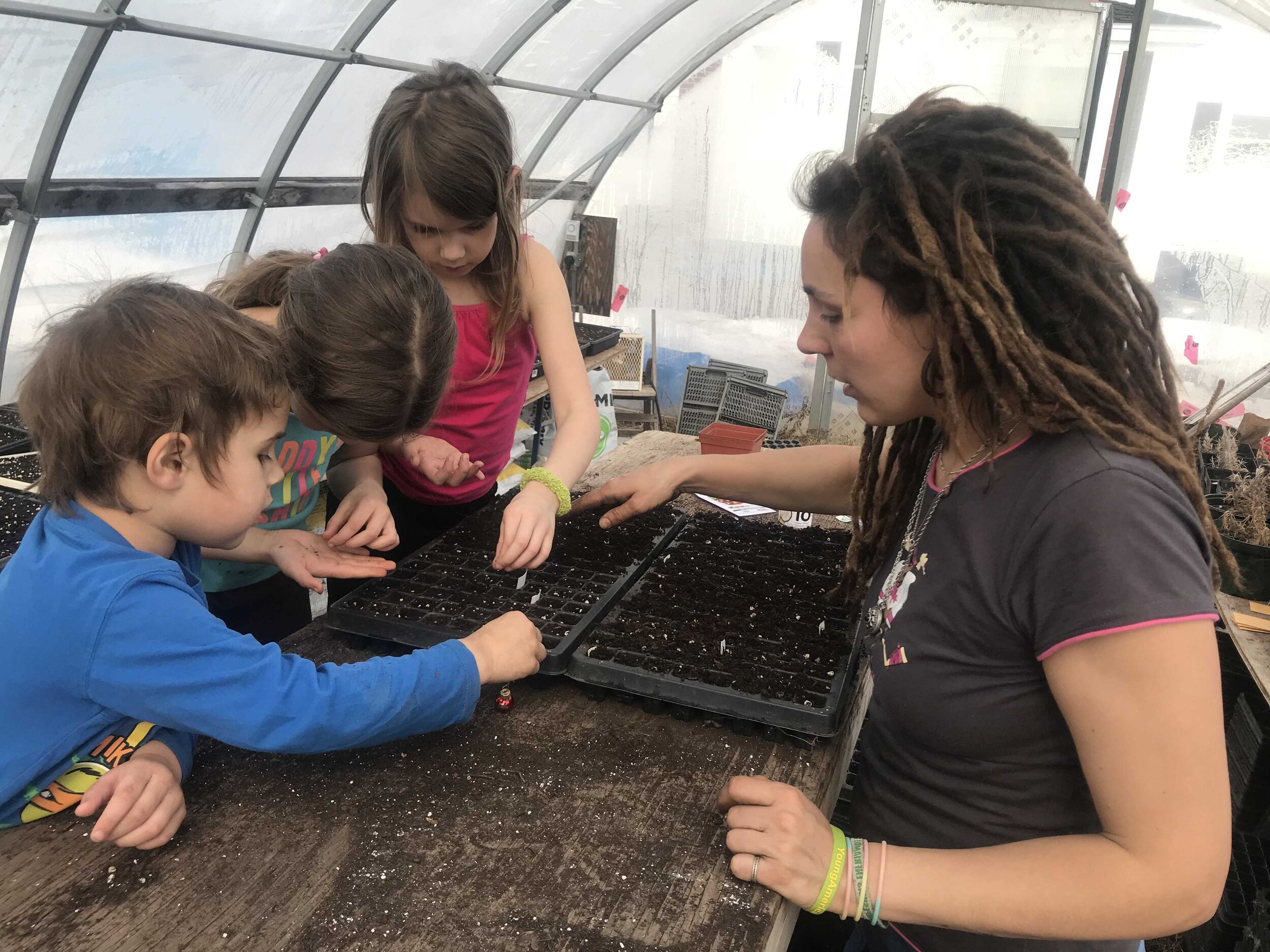Fruits and vegetables 2021 : Indoor sprouts
Spring is upon us and it’s already time to put some vegetables in the ground for a productive season! Although our climate makes the soil difficult to access, nothing is stopping us from being ready with the help of indoor seedlings, which are already found at some of our local farmers’ stalls.
This second episode, on seedlings, is part of a series of ten chapters produced on the occasion of the International Year of Fruits and Vegetables.
This month, we talk to Eva Rehak from Alva Farm, which sells seedlings to their customers every year.
She tells us about tips to get started, the materials used, the planting times, as well as the pros and cons of the different methods.
Seedlings : a matter of expertise?
It’s often mistakenly believed that for successful seedlings you need to be experienced or have a greenhouse and multiple lights that help growing. If in some cases these are necessary (especially if you are thinking big), the farmer at Alva Farm told us that seedlings can also be an affordable practice suitable for home gardeners.
You can do without material by recycling used items that you have on hand. “You can [for example] use small jars of yogurt that you have at home [as a jar] … that does the trick.”
Obviously, it’s a question of choosing your seedlings according to your level of experience. Novices, for example, will prefer lettuce, which requires very little space, before tackling harder seedlings like celeriac directly.
Mistakes to avoid
Eva Rehak first tells us that the land chosen for the seedlings is important: “We are still looking for a soil rich in nutrients, it’s not enough to dig in your backyard for soil!”
Regarding watering, the producer mentions that the most common mistake in terms of seedlings is too much or not enough water. Indeed, a seed and a seedling don’t require the same watering.
“It’s not about taking a glass of water and then watering; it will drown the seed. It’s therefore necessary to spray on the surface, enough so that the seed is wet. [For seedlings], it’s important to always wet the soil, avoiding watering the leaves as this can cause disease, especially for tomatoes, peppers, eggplants and cucumbers too.”
It’s also important to rotate when planting the same kind of variety of vegetables, for example, a cucumber and a pumpkin, two years in a row in the same place. “If you put the same thing in the same place every year, the plans may run out of nutrients,“ she says.
Finally, according to Eva, the quality of the seeds plays a key role in the success rate of our seedlings. Often, the germination rate is written on the package, she says. “If the rate is 98%, there shouldn’t be a problem. But if these are seeds that we have had for a few years, stored improperly, or if it’s seeds that we receive from someone, they are more likely to not germinate well.”
Read the first article in our series here, which talks about tips on different types of seeds.
Natural or artificial light?
If you’re a beginner and have very few seedlings, placing them near a window is the cheapest option. The important thing is to make sure that all the plants have the same level of sunlight.
On the other hand, for those who would like to invest more and guarantee better results, the easiest way is to use a greenhouse because there is sun everywhere and thus prevent the seedlings placed on the edges from stretching in order to make more light.
Equipped with a heated greenhouse exceeding thousands of dollars, Eva Rehak recognizes that it’s not for everyone and offers a compromise: equip yourself with an LED grow light.
If you choose a grow light, beware of its positioning which also has a role to play if you want to obtain good results. The lamp must in fact be neither too close nor too far from the plant. “If [the latter] are too low, they can burn the seedlings, but if they are too high, it can also stretch them.”
When to start
It’s never too late to prepare the seedlings. Eva Rehak tells us that it all depends on when you plan to plant.
She then takes us through the planting process from April to June, to help keep track of the dates where the last frost occurs:
“We try [to plant] as soon as possible, at the end of April we will maybe put carrots already in the ground. We will also put a row cover as soon as there is more snow and we can enter with our little tractor. We [also] plant peas and radishes at the end of April. After that in May, it’s onions, leeks, broccoli, and cabbage. At the beginning of June this is where we start with our tomatoes, our melons, etc.”
All farmers have their own schedules and procedures, which are not necessarily the same as a small-scale gardener.
The other alternative is to buy pre-planted seedlings. The advantages of buying locally include reduced transport times, adaptability to our climate, support for the local economy, but also an exchange of knowledge with the farmer who can surely enlighten you on the next steps to take.
Seedlings will also be available for purchase from Alva Farm and other farmers in the coming months.
With the coming spring, have a good 2021 season!




